
VOCATIONAL SCHOOL
Department of Radio and Tv Programming (Turkish)
RTV 240 | Course Introduction and Application Information
| Course Name |
Corporate Communication
|
|
Code
|
Semester
|
Theory
(hour/week) |
Application/Lab
(hour/week) |
Local Credits
|
ECTS
|
|
RTV 240
|
Fall/Spring
|
2
|
0
|
2
|
4
|
| Prerequisites |
None
|
|||||
| Course Language |
Turkish
|
|||||
| Course Type |
Elective
|
|||||
| Course Level |
Short Cycle
|
|||||
| Mode of Delivery | - | |||||
| Teaching Methods and Techniques of the Course | Group WorkCase Study | |||||
| Course Coordinator | - | |||||
| Course Lecturer(s) | ||||||
| Assistant(s) | - | |||||
| Course Objectives | It is intended to provide information about basic concepts of corporate communication and firms’ communication activities with their stakeholders such as employees, customers, shareholders, media. |
| Learning Outcomes |
The students who succeeded in this course;
|
| Course Description | Basic concepts of corporate communication, corporate communication activities performed for different purposes and for different stakeholders and basic principles to be considered in these activities are discussed. |
|
|
Core Courses | |
| Major Area Courses | ||
| Supportive Courses |
X
|
|
| Media and Management Skills Courses | ||
| Transferable Skill Courses |
WEEKLY SUBJECTS AND RELATED PREPARATION STUDIES
| Week | Subjects | Related Preparation |
| 1 | Introduction to the course Introduction to Communication (concept, relationship and types) | Nafize Güngör, “İletişime Giriş”, Chapter 1 – İletişimin Anlamı, Kaynağı ve İşleyişi. 3rd edition, (Ankara, 2015), 19-138. |
| 2 | Corporate Communication (concept, historical process and corporate structure), Strategic Corporate Communication (corporate values) | Banu Karsak, “Kurumsal İletişim”, Chapter 1 – Kurumsal İletişim Kavramına Genel Bir Bakış. 1st edition, (İstanbul, 2016), 13-25. |
| 3 | Stakeholder Management (stakeholder analysis, organisational audit) | Bilçin Tak, “İşletmelerin Sosyal Sorumlulukları ve Paydaş Grupları ile İlişkilerinin Yönetimi”, 1st edition, (İstanbul, 2010), 9-22. |
| 4 | Functions of Corporate Communication (media relations, investor relations, government relations, employee relations) | Elif Başak Sarıoğlu, “Y’leri Anla, Değiştirme - Kurumsal Hayatta Milenyum Kuşağı ve İletişim”, 1st edition, (İstanbul, 2018), 11-89. |
| 5 | Corporate Culture (corporate identity, corporate citizenship, corporate ethics) | Filiz Balta Peltekoğlu, “Halkla İlişkiler Nedir?”, 5th edition, (İstanbul, 2007), 544-563. Rob Goffee ve Gareth Jones, “Kurum Kültürü”, 1st edition, (Ankara, 2002), 13-169. |
| 6 | Corporate Image and Reputation (corporate brand management, corporate marketing, corporate advertising, public relations and sponsorship) | Filiz Balta Peltekoğlu, “Halkla İlişkiler Nedir?”, 5th edition, (İstanbul, 2007), 360-439. Gıyasettin Tayfur, “Reklamcılık”, 3rd edition, (Ankara, 2008), 205-218. |
| 7 | Midterm Exam | |
| 8 | Corporate Social Media (web 1.0, web 2.0, web 3.0 and interactive marketing) | Murat Kahraman, “Sosyal Medya 101 2.0”, Chapter 2 – Kurumsal Sosyal Medya Kullanımı, 3rd edition, (İstanbul, 2014), 51-80. Aybike Pelenk Özel ve Nuray Yılmaz Sert, “Dijital Halkla İlişkiler Kavram ve Araçları”, (İstanbul, 2015), 53-77. |
| 9 | Internal and External Corporate Communication (marketing communication, financial communication and organisational communication) | Kenneth E. Clow ve Donald Baack, “Bütünleşik Reklam, Tutundurma ve Pazarlama İletişimi”, tn. R. Gülay Öztürk, 7th edition, (Ankara, 2016), 2-24. |
| 10 | Corporate Communication Tools | A. Rıdvan Bülbül, “Halkla İlişkiler”, Chapter 16 – Yazılı, Basılı ve Kitlesel Araçlar, 2nd edition, (İstanbul, 2004), 191-206. Alaeddin Asna, “Kuramda ve Uygulamada Halkla İlişkiler”, (İstanbul, 2006) |
| 11 | Corporate Social Responsibility (corporate sustainability) | Banu Karsak, “Kurumsal İletişim”, Chapter 1 – Kurumsal İletişim Kavramına Genel Bir Bakış. 1st edition, (İstanbul, 2016), 42-45. |
| 12 | Crisis Management (corporate crisis management and message strategy) | Salim Kadıbeşegül, “Kriz Geliyorum Der! – Kriz İletişimi ve Yönetimi”, 3rd edition, (İstanbul, 2008), 55-135. İrfan Erdoğan, “Halkla İlişkiler”, Chapter 10 – Kriz İletişimi ve Yönetimi, 2nd edition, (Ankara, 2008), 257-272. |
| 13 | Presentation Week for Students’ Projects | Students will be given projects to work on a comprehensive research. The results will be presented in class and submitted as a report |
| 14 | Presentation Week for Students’ Projects | Students will be given projects to work on a comprehensive research. The results will be presented in class and submitted as a report |
| 15 | Review of the semester | |
| 16 | Final Exam |
| Course Notes/Textbooks | Banu Karsak, “Kurumsal İletişim”, 1. Baskı, Beta Yayımcılık, (İstanbul, 2016). |
| Suggested Readings/Materials | Alan T. Belasen, “The Theory and Practice of Corporate Communication – A Competing Values Perspective”. Goodman, Michael B. & Peter Hirsch, Corporate Communication: Strategic Adaptation for Global Practice. NY: Peter Lang Publishers, 2010. Goodman, Michael B. Work with Anyone Anywhere: A Guide to Global Business. San Francisco: Professional Publications, 2006. |
EVALUATION SYSTEM
| Semester Activities | Number | Weigthing |
| Participation | ||
| Laboratory / Application | ||
| Field Work | ||
| Quizzes / Studio Critiques | ||
| Portfolio | ||
| Homework / Assignments | ||
| Presentation / Jury |
1
|
30
|
| Project | ||
| Seminar / Workshop | ||
| Oral Exams | ||
| Midterm |
1
|
30
|
| Final Exam |
1
|
40
|
| Total |
| Weighting of Semester Activities on the Final Grade |
2
|
60
|
| Weighting of End-of-Semester Activities on the Final Grade |
1
|
40
|
| Total |
ECTS / WORKLOAD TABLE
| Semester Activities | Number | Duration (Hours) | Workload |
|---|---|---|---|
| Theoretical Course Hours (Including exam week: 16 x total hours) |
16
|
2
|
32
|
| Laboratory / Application Hours (Including exam week: '.16.' x total hours) |
16
|
0
|
|
| Study Hours Out of Class |
14
|
2
|
28
|
| Field Work |
0
|
||
| Quizzes / Studio Critiques |
0
|
||
| Portfolio |
0
|
||
| Homework / Assignments |
0
|
||
| Presentation / Jury |
1
|
16
|
16
|
| Project |
0
|
||
| Seminar / Workshop |
0
|
||
| Oral Exam |
0
|
||
| Midterms |
1
|
16
|
16
|
| Final Exam |
1
|
24
|
24
|
| Total |
116
|
COURSE LEARNING OUTCOMES AND PROGRAM QUALIFICATIONS RELATIONSHIP
|
#
|
Program Competencies/Outcomes |
* Contribution Level
|
||||
|
1
|
2
|
3
|
4
|
5
|
||
| 1 | To be able to define the historical development process, fundamental principles, and theories of Radio and Television Programming, and explain the basic principles of audio-visual storytelling. |
X | ||||
| 2 | To be able to utilize technical equipment and software requiring expertise in the field of Radio and Television Programming according to contemporary techniques. |
|||||
| 3 | To be able to describe the pre-production research of an audio-visual work, scriptwriting, production planning, camera usage, sound recording, lighting setup, and post-production editing design at a fundamental level and apply at least one of them at an advanced level. |
|||||
| 4 | To be able to apply standard video shooting and sound recording indoors and outdoors within the scope of a production in teamwork. |
|||||
| 5 | To be able to explain the national and universal values, professional and ethical principles, and legal regulations required in radio-television broadcasting. |
|||||
| 6 | To be able to evaluate audio-visual outputs based on technical and methodological criticism. |
|||||
| 7 | To be able to generate creative and critical approaches and projects suitable for the broadcasting platform and selected media, taking responsibility in individual or teamwork. |
|||||
| 8 | To be able to consider occupational safety principles while working in media, production, and press-broadcasting fields. |
|||||
| 9 | To be able to apply the knowledge gained in classes within the scope of an internship in relevant job fields. |
X | ||||
| 10 | To be able to follow the information in the field and communicate with colleagues by using English at the general level of European Language Portfolio A2. |
|||||
| 11 | To be able to possess interdisciplinary knowledge in artistic, cultural, and social issues related to communication fields and programs. |
X | ||||
| 12 | To be able to direct their learning towards an advanced educational level by keeping track of technological changes and innovations, considering a lifelong learning vision. |
|||||
| 13 | To be able to analyze the universal and social dimensions and legal consequences of their professional work in the field concerning human rights, cultural diversity, environmental issues, public interest, and public service. |
X | ||||
*1 Lowest, 2 Low, 3 Average, 4 High, 5 Highest
NEWS |ALL NEWS
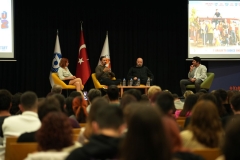
‘Mortal World 2’ actors at IUE
Sarp Apak and Ahmet Mümtaz Taylan, the actors of the film ‘Ölümlü Dünya 2’ (Mortal World 2), which has garnered significant attention
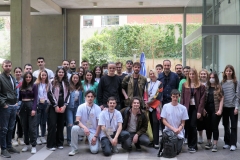
500 students met at the 'festival'
Izmir University of Economics (IUE) Vocational School held one of the biggest design and creativity festivals in the city. 500 students participating
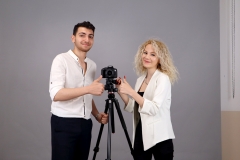
PA’s to the world-famous program from IUE
Hilal Yapıcıoğlu and Doğukan Sözen, students of Izmir University of Economics (IUE) Radio and Television Programming, worked as 'production assistants' in the
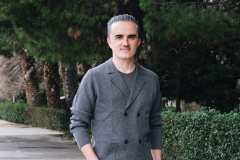
Turkish photography will be promoted in Italy
IUE Lecturer Emre Küheylan was invited as a curator and speaker to the world-famous photography festival called 'Photolux' to be held in

'Turkish coffee' and 'fortune telling' became a documentary
'Turkish coffee', which has become one of the indispensable values of our culture, inherited from centuries ago, and 'coffee fortune-telling', which many
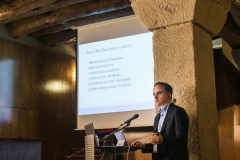
The first Turkish person in the giant jury
Emre Küheylan, Lecturer at Izmir University of Economics (IUE), who has works that made a difference in photography, whose works are exhibited
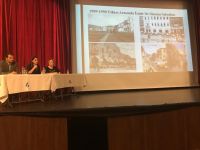
IZMIR CINEMAS WILL REVIVE
Film industry has been addressed at the “Revive Cinema in Izmir Again!” themed panel that took place on Thursday, December 20 at

